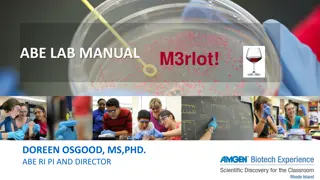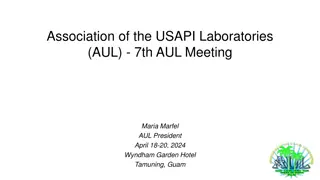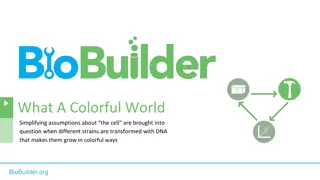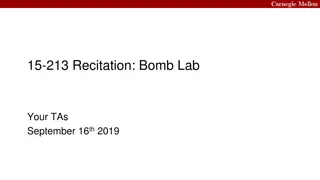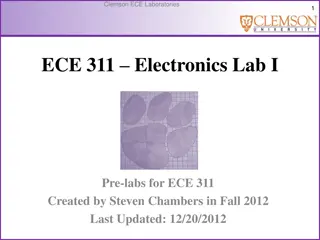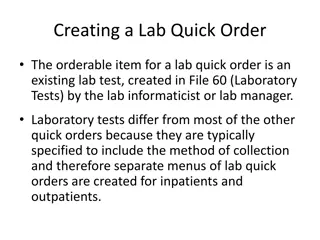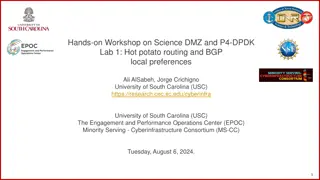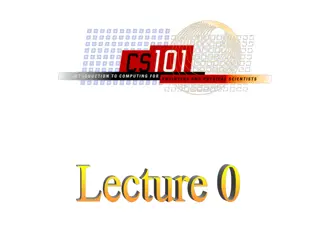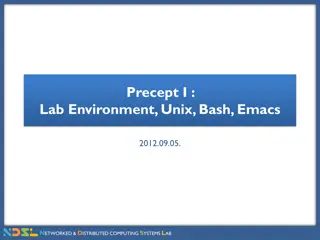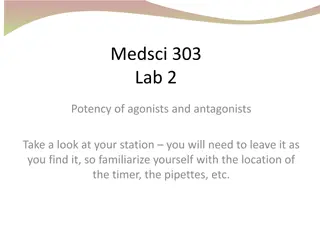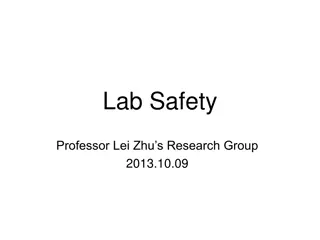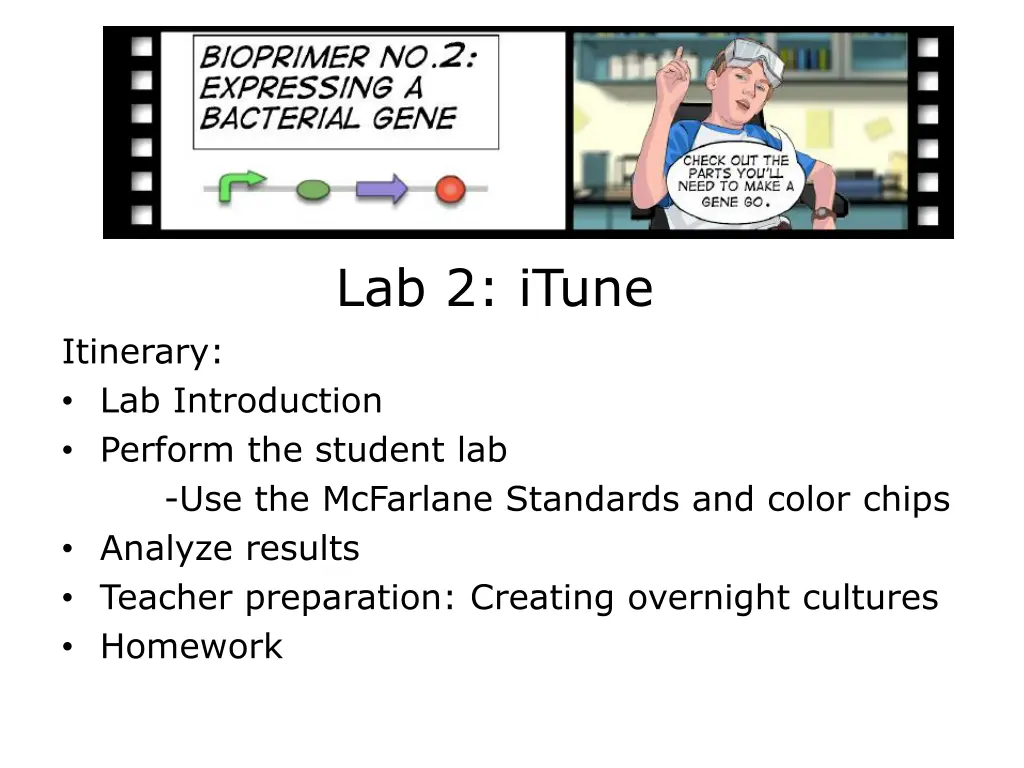
Understanding Device Characterization and Gene Expression in Engineering Labs
Explore the process of characterizing devices and controlling gene expression in laboratory settings through practical experiments. Learn about McFarlane Standards, color chips, and manipulating operons for desired outcomes. Discover the impact of different promoters and ribosome binding sites on enzyme activity in genetic engineering studies.
Download Presentation

Please find below an Image/Link to download the presentation.
The content on the website is provided AS IS for your information and personal use only. It may not be sold, licensed, or shared on other websites without obtaining consent from the author. If you encounter any issues during the download, it is possible that the publisher has removed the file from their server.
You are allowed to download the files provided on this website for personal or commercial use, subject to the condition that they are used lawfully. All files are the property of their respective owners.
The content on the website is provided AS IS for your information and personal use only. It may not be sold, licensed, or shared on other websites without obtaining consent from the author.
E N D
Presentation Transcript
Lab 2: iTune Itinerary: Lab Introduction Perform the student lab -Use the McFarlane Standards and color chips Analyze results Teacher preparation: Creating overnight cultures Homework
An engineering paradigm Design Build The focus of this lab Test
You will be characterizing the device: Can we tune it to the output we want? Why would we want to do this?
A well understood system. Might be good to use here Open Reading Frame Promoter: Ribosome binding site Operator What do each of these parts do? What part(s) of the operon will control the rate of expression?
LacZ gene codes for Beta Galactosidase which converts lactose to glucose and galactose: We could measure the production of galactose or glucose but is there a better way? What if we could trick the operon into producing something we could see? Or measure easily?
Would we need the LacY and LacA genes if they are only involved after the lactose is metabolized? Would we want the operator? What if we could reconstruct this operon?
If given ONPG* as a substrate (*o-nitrophenyl- - D-galactoside) LacZ will produce Galactose o-nitrophenol, Which is yellow! LacZ ORF Promoter: Strong Medium Weak RBS: Strong Medium Weak An indicator of enzyme activity What if we mix and match the Promoters and RBS?
Your Assignments: Team Samples Red R, 2-1, 2-2, 2-3 Orange R, 2-4, 2-5, 2-6 Yellow R, 2-7, 2-8, 2-9 Green R, 2-1, 2-2, 2-3 Blue R, 2-4, 2-5, 2-6 Pink R, 2-7, 2-8, 2-9 Violet R, 2-1, 2-2, 2-3, Grey R, 2-4, 2-5, 2-6 White R, 2-7, 2-8, 2-9
Summary of todays procedure: 1.Obtain McFarland Standards 2.Make 3 mls of 1:10 dilution of your assigned samples 3.Compare the samples with the McFarland Standards These are the OD 600 results 4.Lyse cells (CHCl3 is in the hood) 5.Conduct the reaction watch the time! 6.Compare the resulting yellow color with the paint chips These are the OD 420 results. 7.Calculate Miller Units 8.Report data to us.

